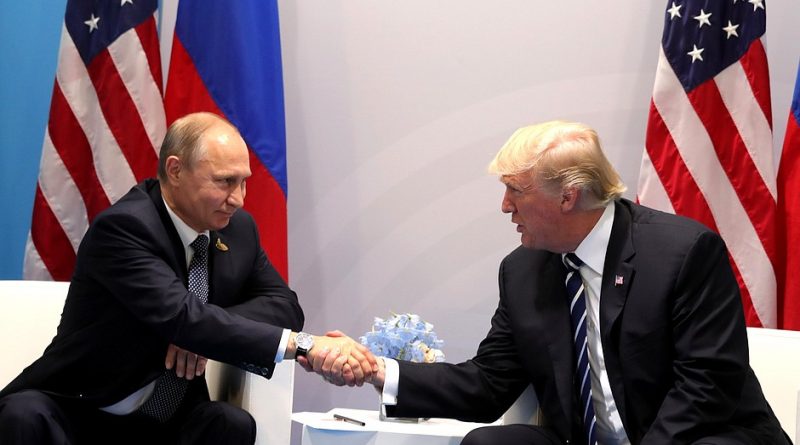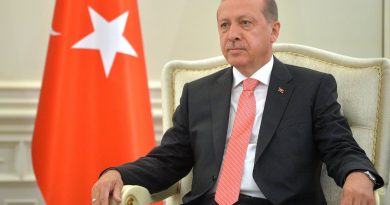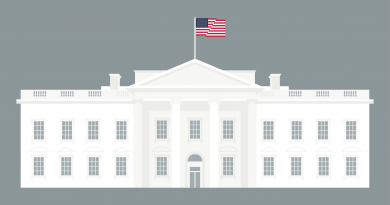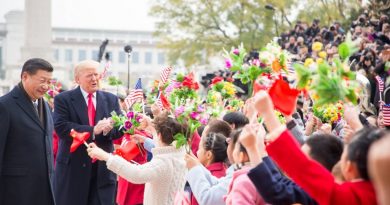A series of unfortunate resets: U.S.-Russian relations after the Cold War
The world’s two foremost nuclear powers cannot have this kind of relationship.
Those words were uttered by former U.S. Secretary of State Rex Tillerson in April of last year, following a 2 hour meeting with President Putin which made clear the low level of trust between Russia and the United States. Both Tillerson and Trump have since made several claims of an “all time low” in Russo-American ties, the latest of which on April 11, following a threat to Russia issued by the U.S. President, who stated that “missiles (…) will be coming, nice and new and “smart.”” The threat would be realized only two days later, as the U.S., along with France and the U.K., launched a missile attack against military, storage, and research targets related to Syrian chemical weapons capabilities. This action was a response to a suspected use of chemical-weapons by the Bashar al-Assad regime on the rebel-held suburb of Douma, which killed dozens of people.
A persisting emphasis on security
As the Cold War came to an end, Moscow was no longer generally perceived as an ideological and military rival to Washington (p. xi). The new status quo was hard to accept for both the Russian leadership and citizens, who saw it as essential, from 1992 onwards, to restore Russia’s standing as a great power, and as an equal to the United States. The lack of success in that regard was a source of deep frustration (p. xi).
Even in a post-Cold War world, the relationship between the two countries continued to be marked by a strong emphasis on matters of security. This was manly due to a lack of trade, stakeholders, and week institutional linkages that would be expected to increase the level of engagement between the two nuclear superpowers (p. 17; 48). These factors were also exacerbated by a deep level of distrust in both sides’ security establishments (p. x).
Legacies of the Cold War and its aftermath
Angela Stent explains that contemporary Russo-American relations “can be understood only in the context of both countries striving to come to terms with the legacy of the Cold War and its aftermath” (p. 3). While a modest reset took place in the Bush Sr.-Yeltsin years, domestic issues on both ends, in addition to overly cautious policies towards Russia in the U.S., hindered significant improvement in their ties (p. 6-7). Although the Clinton administration created high expectations by pursuing a more ambitious reset, many of the problems that the U.S. President and Yeltsin fought over still persist today. One of them is Europe, and its post-Cold War strategic order, which was shaped by NATO expansion into Russia’s neighborhood. Another example concerns the perception that existed in Russia that the U.S. treated the former “as a defeated power, and not as an equal” – a narrative that would be later most commonly associated with Vladimir Putin (p. 20).
The Putin years
In the George W. Bush administration, arms control treaties became seen as Cold War relics. This was a great source of concern in Russia, as its nuclear arsenal constituted the foundation of its perceived status as a great power, and one of the few fields where it was still an equal to the U.S. (p. 57). Putin had initiated a third reset expecting that his support for the American Global War on Terror could secure understanding in the U.S. regarding Russia’s own problems with domestic terrorism in Chechnya, and regarding its vital interests in the near abroad. It was his goal to establish a new world order in which Russia’s voice in international affairs would be acknowledged, and where a new U.S.-Russia anti-terrorism coalition could be formed (p. 69). As it became clear that Russia’s expectations would not be met, avenues for cooperation narrowed, particularly when the prospect of Ukraine and Georgia’s membership to NATO came to the table, an absolutely unacceptable scenario to Russia (p. 164), making it one of the most important factors to consider when analyzing the 2008 Georgian War.
Russia reasserts itself
With Barack Obama in power came a profoundly different foreign policy towards Russia, aiming to pursue greater engagement and resetting once again the relationship between the two countries. Obama and Medvedev had a good working relationship and thus managed to reach agreement on very contentious matters (p. 271), even succeeding at setting in place the greatest arms control deal in a generation – the New START Treaty. Its signing took place even in light of one of the biggest challenges in U.S.-Russian relations after the Cold War, namely U.S. ambitions for establishing a missile defense system in Europe – which Russia believed would threaten its deterrence.
When Putin returned to the Kremlin, however, frustration became apparent during talks about Syria since Russia blamed the U.S. for the state of affairs in the Middle East, and remained committed to support Bashar al-Assad. Russia’s annexation of Crimea, destabilization in Eastern Ukraine, and military interventions in Syria would repeatedly lead Russo-American relations to new lows. As Suslov explains, more than a clash of national interests, these events result from a “fundamental disagreement about the basic rules and norms of international relations and a clash of the visions of international order” following the end of the Cold War (p. 547). Russia sees global instability as a result of a U.S. post-Cold War imposition of unipolarity, and thus demands collective decision-making, and for the U.S. to stop acting as a global jury of states and regimes, making decisions of sovereignty and legitimacy according to Western preferences (p. 552). Such arguments are filled with hypocrisy, however, as Russia’s intervention in the 2016 U.S. elections swayed the results towards Moscow’s more favorable candidate.
Final remarks
The current problems in Russo-American relations stem from unresolved issues which emerged after the end of the Cold War and were never decisively tackled by both sides. Ties have been overly dependent on working relations between high-ranked figures – particularly Presidents – and not enough effort has been placed on addressing the stakeholder issue, developing significant commercial ties, or building platforms for deeper engagement. The lack of willingness in the U.S. to pursue bold policies towards a more cooperative relationship with Russia at the very end of the Cold War, followed by its imposed global hegemony in the international system, with disregard for Russia’s concerns and interests, have certainly contributed to poison their relations. On the other hand, Moscow’s foreign policy is mobilized by Putin as a way to makes his own rule legitimate, and by reversing Russia’s progress towards democracy, he has narrowed opportunities for cooperation with the Cold War rival. Therefore, a good starting point for both countries would be to re-examine the way they think about each other, to try to cooperate on matters where mutual interests can be found (in arms control, for instance) and build up from those foundations.
Hopefully one day continued engagement can put an end to the persisting problems between the two states, but in the meantime, they need to be able to work together.
Photo by Kremlin / CC BY 4.0
![]() This work is licensed under a Creative Commons Attribution-NonCommercial-ShareAlike 4.0 International License.
This work is licensed under a Creative Commons Attribution-NonCommercial-ShareAlike 4.0 International License.




